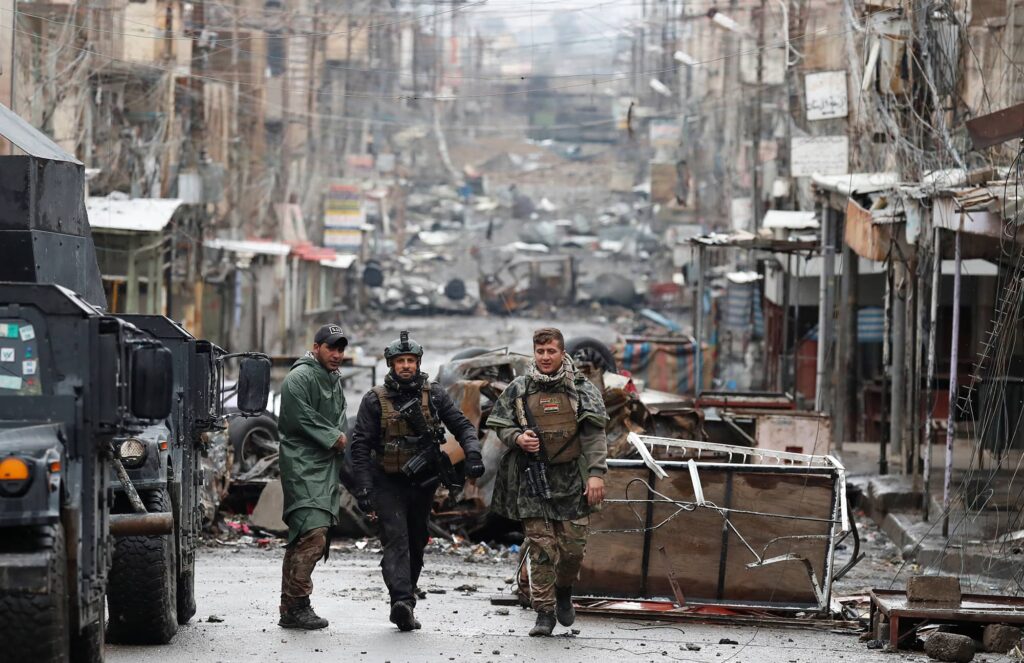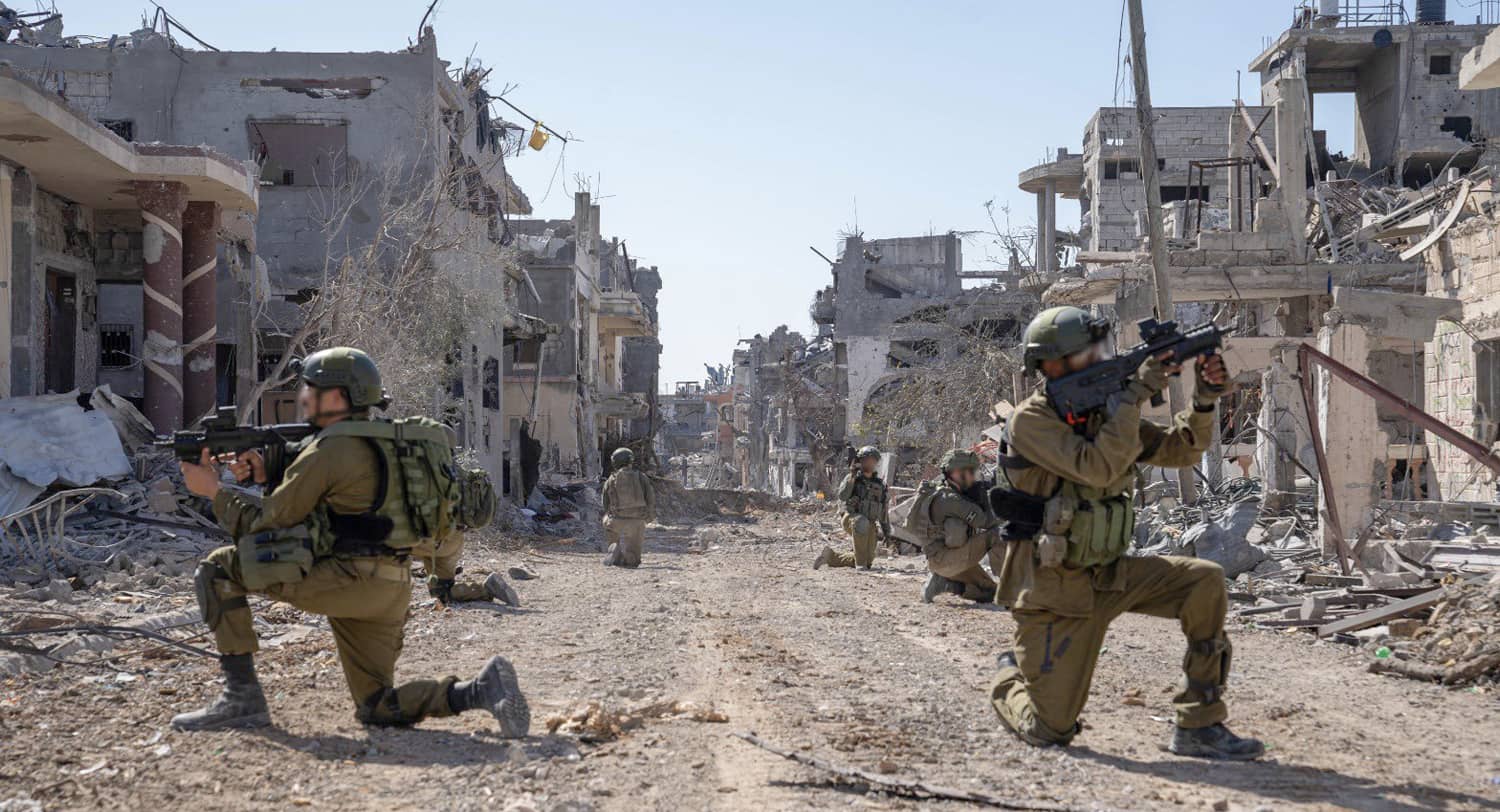When the war broke out in Gaza, observers made a number of comparisons to the challenges faced by the US-backed anti-ISIS coalition in the battle of Mosul. I was in northern Iraq when it began in October 2016, and I covered the battles leading up to the liberation of the old city of Mosul in March and April 2017. I also reported on the ISIS war in other areas and was able to see how ISIS used tunnels to hide from US aircraft, much as Hamas uses tunnels in Gaza, although the ISIS tunnels were much less extensive. ISIS brutality was similar to the crimes of Hamas.
>> Reports from the Gaza Front: Read more from Seth J. Frantzman
After 100 days of fighting in Gaza, it is clear that much more needs to be done to achieve israel’s goal of dismantling Hamas. The IDF estimated in mid-January that around 9,000 terrorists have been eliminated in Gaza, along with 19 Hamas battalion commanders. In a war of regular armies, this ratio (about a quarter of their fighting force killed, many others wounded or captured) would have sufficed to break the enemy’s will. But this is not regular warfare.
In general the size of Gaza City and its environs matches well with Mosul. Each has around two million residents in a large urban area. The challenge for Israel and for the Iraqi army were similar. The enemy was hidden among civilians and in civilian areas. ISIS had several years to fortify Mosul, while Hamas had almost two decades. In both cases the armies that were arrayed to defeat the terrorist group had to find a way to get civilians to move out of the way of the fighting.
After 100 days of fighting, it’s important to look at what has been accomplished and draw some lessons. The IDF estimates of Hamas members eliminated are instructive. When the war began Hamas had between 30,000 to 40,000 armed men, arranged in some 24 battalions, in several brigades in northern and southern Gaza. Most battalions were territorial, meaning they took their names from the neighborhoods they hid in. There was a battalion in Shati, near the beach, for instance. There was a battalion in Shujaiya and Jabalya, two dense urban neighborhoods near Gaza. There were more battalions in Khan Yunis, the hometown of Hamas leader Yahya Sinwar.
These battalions of Hamas are organized down to the company level. But Hamas “companies” tend to be larger than a usual infantry company. They may have 200 or more men. But unlike a normal infantry unit, Hamas doesn’t fight on a frontline. There were no clashes in Gaza where an Israeli infantry unit, such as Golani, fought along a line against a whole Hamas battalion. Rather, the battalion was hidden in civilian homes and underground. Israel spent weeks targeting these units with airstrikes in October. That means that by the time the IDF tanks and infantry, backed by drones, artillery, naval gunfire, warplanes and special forces, went into Gaza on October 27, there were fewer Hamas units ready to stand and fight.

Israel had planned for a new type of warfare before October 7. It wanted to push data to the frontline and rapidly close “sensor to shooter” loops, making war more efficient and cutting down on casualties among civilians and among IDF soldiers.
However, the war in Gaza has illustrated that a big war is still fought in the old way. That doesn’t mean that new technology doesn’t play a role. Its application has meant that there is less contact with the enemy. Enemies who would pop out of tunnels can be monitored, tracked and eliminated before they reach IDF lines. That’s not always possible, but in conversations with a dozen different IDF units, it’s clear how much work goes into stopping the threat before it can reach Israel’s forces. The IDF has also transitioned to a more low intensity conflict in January, meaning the bombing campaign is now largely over.
How does this compare with the Iraqi army in Mosul, who were backed by US-led coalition aircraft and artillery? The Iraqi army was not hi-tech like Israel’s army. It also didn’t have large armored units. It did, however, have masses of infantry and paramilitaries and also Federal police, a kind of quasi military unit. It could “flood the zone” with men. Mosul is different from Gaza. The city is divided by the large Euphrates, with a number of bridges over the river. The Iraqis first surrounded Mosul in October, cutting a huge swath around the city on all sides. Then they let the civilians slowly flee. Iraqi units processed the civilians and they went to IDP camps. Israel, by contrast, encouraged civilians to go to the southern Gaza Strip, which left them still under Hamas control. The Iraqi way of getting civilians out of ISIS control was preferable to what was available for Israel in Gaza.
Iraq focused on defeating ISIS in eastern Mosul first. After Kurdish Peshmerga fighters helped secure some initial gains in the Nineveh plains, the Iraqi federal forces took over and attacked Mosul’s suburbs. Initial success led to bloody failures as Iraqi forces in Humvees were chewed up by ISIS members who sprang out of tunnels and ambushed them. The result was that Iraq lost numerous vehicles and suffered casualties. Eventually the Iraqi forces made progress. By January 2017, ISIS was defeated in eastern Mosul. In Gaza, Israel’s timeline matches Mosul’s fairly closely. Israel began in early October, and by January had transitioned to a different level of operations, having largely secured northern Gaza.
As for civilian casualties, the battle for Mosul resulted in around 10,000 civilians killed. As of mid-January, the Hamas-run Ministry of Health Ministry in Gaza reports about 25,000 deaths, though Israel estimates that 9,000 of those are Hamas fighters. Still the number of civilians killed in Gaza in three months is much higher than those killed in Mosul in nine months. There are differences in the amount of munitions used and also the fact that civilians were able to flee Mosul into the rest of Iraq, while in Gaza they cannot flee the Strip. Also, while ISIS used human shields the same way Hamas did, Hamas has become more of an expert in using civilian areas, such as hospitals, to hide its activity. ISIS didn’t have 15 years to create the terror infrastructure that Hamas did. Therefore Hamas’ activities increased the chances for civilians to be killed, whereas ISIS was not able to increase these chances as much.

The question now is what comes next. The Iraqi army crossed the Euphrates and then moved up into western Mosul from the south. It took until July to defeat ISIS in Mosul. ISIS had fewer armed men than Hamas.
It could take many more months to defeat Hamas, if the IDF is seeking to conduct a Mosul-like operation. The challenge for the IDF, which is different from the one facing the Iraqis, is that the civilians in southern Gaza are now all concentrated in an area they fled to. It is unclear how they can be enabled to go back to northern Gaza and whether Israel will find some provisional authority to govern them if they do. Estimates indicate there are at least some 200,000 Gazans in northern Gaza. It is plausible to assume Hamas continues to operate among them. This is a major difference with Mosul. In Mosul ISIS was completely defeated. In Gaza the defeat of Hamas will be more complex.
The IDF lacks the international support enjoyed by the anti-ISIS coalition in Iraq. Even though Iraq suffered much heavier losses than the IDF, its campaign enjoyed the support of some 70 countries. In contrast, many countries have consistently been urging Israel to stop major combat operations. Israel’s choices are more complex as it nears Hamas’s last strongholds in Rafah near the border with Egypt. Countries supplying humanitarian aid to Gaza will be concerned if the IDF operates in areas where their field hospitals are located and aid is delivered. Hamas’ ability to control the aid is also very different than in the case of ISIS. ISIS was not able to distribute or hijack aid entering Mosul, because the aid was provided at internally displaced persons camps that were controlled and secured by Iraqi forces or Iraqi paramilitaries and militias.
As the war in Gaza moves into its fourth month, these are the major challenges that Israel will have to address going forward.
>> Reports from the Gaza Front: Read more from Seth J. Frantzman

